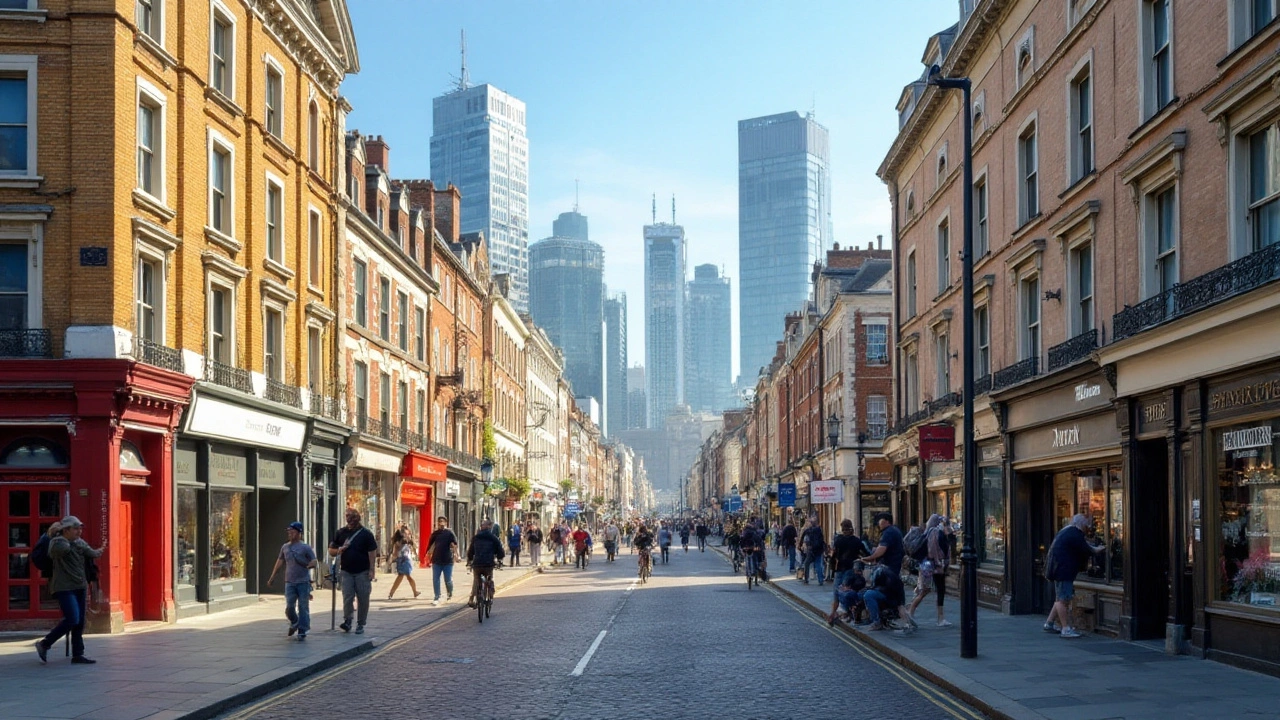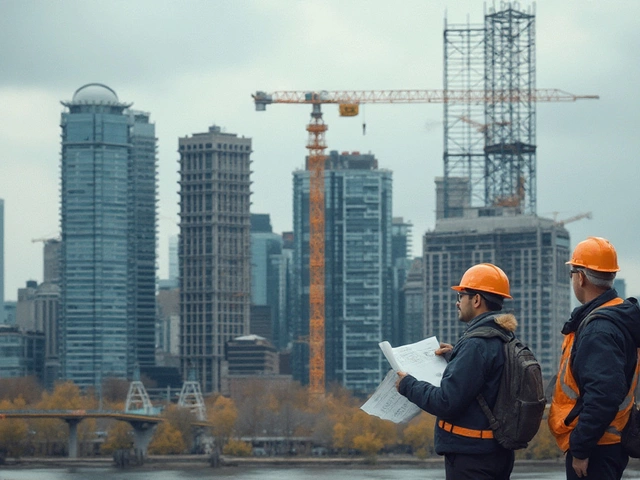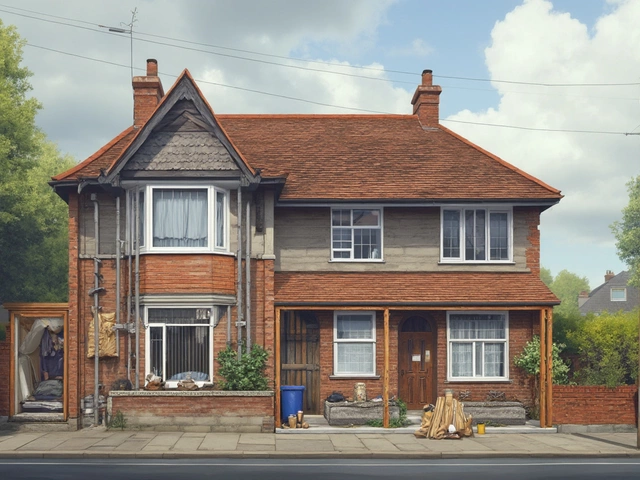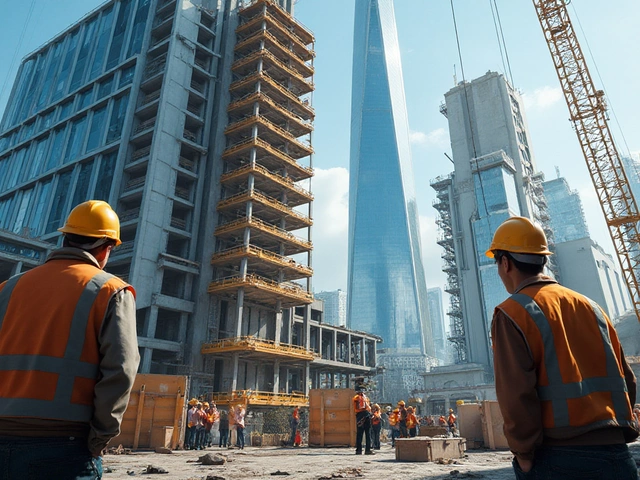In the bustling realm of cities, commercial buildings stand as towering testaments to human ingenuity, serving as the backbone of commerce and business. These structures, ranging from sleek office towers to sprawling shopping malls, are crafted with precision to support the plethora of activities they host.
Each commercial building is meticulously designed, not just to shelter, but to enhance functionality and experience. They are the stage where economic exchanges unfold, where professionals collaborate, and where retail thrives. In this exploration, we’ll navigate through the essentials of commercial buildings in construction, shedding light on the myriad types, unique requirements, and latest trends shaping the skyline today.
- Defining Commercial Buildings
- Types of Commercial Structures
- Unique Design and Construction Requirements
- Trends and Innovations in Commercial Construction
- Tips for Successful Commercial Construction Projects
Defining Commercial Buildings
Understanding the essence of commercial buildings requires diving into the multifaceted world of architecture and business. At their core, these structures are built to support the economic backbone of cities, acting as hubs where trade, services, and enterprise converge. Whether you're gazing up at a glossy office skyscraper or navigating the vibrant corridors of a retail mall, you're experiencing the variety and scope of commercial construction.
The fundamental distinction of a commercial building from residential or industrial properties lies in its purpose. Commercial buildings are specifically designed for businesses and services to operate efficiently and effectively. They include a broad spectrum of structures from retail stores, restaurants, and hotels, to larger entities like hospitals and educational institutions. The need to accommodate vast numbers of people and provide services safely and comfortably guides their construction, influencing design and material choices at every step.
One of the critical aspects defining these buildings is their zoning and permitting processes, which are distinct from other types of construction. Municipal laws and guidelines determine the height, usage, and footprint of a commercial space, often reflecting a balance between urban planning and economic needs. For instance, in urban centers, commercial skyscrapers might be permitted and encouraged to maximize business space. In contrast, more suburban areas might limit building heights to maintain local aesthetics and character.
Perhaps what truly sets commercial buildings apart is their impact on urban landscapes and societies. A report by the National Association of Realtors highlights that commercial real estate contributes over $1 trillion to the U.S. economy annually.
"Commercial real estate is a key driver of job creation and economic stability," says Lawrence Yun, NAR Chief Economist. "Its role in shaping the dynamics of urban growth patterns cannot be overstated." This economic contribution underscores their importance not just as physical structures, but as catalysts for growth and development.Designing for the multitude of activities that occur daily requires architects and engineers to consider durability, energy efficiency, and adaptability. From incorporating energy-conscious materials to embracing smart technology for enhanced security and management, modern commercial buildings often lead the charge in innovation. They stand not just as spaces for business, but as blueprints for sustainable urban living.
The evolution of commercial buildings reflects societal trends, technological progress, and economic shifts. As urbanization continues, the demand for innovative, flexible, and environmentally friendly designs grows. This requires a consistent re-evaluation of design principles, ensuring that commercial spaces remain at the forefront of architectural ingenuity and urban functionality.
Types of Commercial Structures
Commercial buildings come in a wide variety of forms, each purpose-built to support the myriad activities conducted within their walls. From towering office skyscrapers that pierce the skyline to sprawling retail complexes that serve as community hubs, the diversity in commercial construction is immense. These structures are designed not only with consideration for aesthetics and utility but also for the unique demands of the businesses they house. Office buildings, for example, are equipped with state-of-the-art communication infrastructure to facilitate seamless operations. Giant glass facades are not just architectural preferences—they maximize natural light, significantly impacting energy consumption and workplace productivity.
The commercial segment includes office buildings, retail spaces like malls and shopping plazas, industrial buildings that may house factories or warehouses, and healthcare facilities such as hospitals and clinics. According to the U.S. Energy Information Administration, the commercial construction industry accounted for around 20% of the energy consumption in the U.S. in recent years, highlighting the sector's significant environmental footprint.
The complexity of designing commercial property is reflected in its functional requirements. For instance, retail spaces demand vast areas with open floor plans to accommodate dynamic customer flows, while healthcare buildings require stringent adherence to health standards and patient safety protocols. These nuances shape the way architects and engineers approach each project, ensuring that the structure serves its intended purpose while complying with regulatory requirements and maximizing efficiency. The need for such tailored designs is perhaps best encapsulated by the words of renowned architect Frank Gehry:
"Your best work is your expression of yourself. Now, you may not be the greatest at it, but when you do it, you’re the only expert."Let's take a closer look at the renowned skyscrapers, often synonymous with urban development. These vertical cities are marvels of engineering, offering not only commercial spaces but also residential areas, shopping centers, and even parks. Skyscrapers like New York City's One World Trade Center or London's Shard exemplify the innovative techniques in commercial construction, utilizing materials such as steel and glass to reach unprecedented heights. Such structures require intricate planning, from the foundations that anchor them to the skyline to the high-speed elevators that shuttle inhabitants between floors.
In the retail domain, enclosed malls and open-air shopping centers have evolved to meet the changing demands of consumers. The modern shopping experience is driven by technology and experience-focused designs, with interactive features and seamless connectivity becoming key attractions. The interiors are crafted to enhance the shopping experience, using architectural elements that guide and engage shoppers. According to the International Council of Shopping Centers, despite the rise of e-commerce, physical retail spaces still play a crucial role in branding and consumer interaction, adding layers to the shopping experience that online platforms simply can't replicate.

Unique Design and Construction Requirements
Constructing a commercial property brings with it a set of unique challenges and needs that diverge significantly from residential projects. These buildings are not mere shelters; they are dynamic environments designed to boost productivity, enhance customer experiences, and support specific business operations. For example, the layout of a retail space should facilitate smooth consumer traffic and display merchandise effectively, while a corporate office should foster collaboration with open-plan areas and private offices alike. HVAC systems must be robust enough to handle large spaces with varying occupancy, ensuring a comfortable atmosphere year-round.
Acoustics also play a crucial role, especially in spaces such as theaters, lecture halls, or any environment where sound quality is paramount. Architects and designers often utilize advanced materials and techniques to manage acoustics effectively, ensuring that sound is distributed evenly and unwanted noise is minimized. Energy efficiency forms another cornerstone of commercial construction, with modern buildings frequently incorporating sustainable technologies such as solar panels, rainwater harvesting, and even green roofs. These practices not only reduce operational costs but also contribute positively to environmental sustainability, a growing priority in construction.
A building's facade is an aesthetic statement that must also function efficiently. Large glass surfaces, for instance, must be designed with thermal management in mind to prevent excess heat gain or loss, which can wreak havoc on energy bills and comfort levels inside. Moreover, fire safety is paramount, with strict regulations governing everything from the materials used to the placement of sprinklers and other fire suppressant systems. Compliance with these standards is non-negotiable and requires meticulous planning and execution.
Building codes and zoning laws differ from one jurisdiction to another, presenting another layer of complexity. Developers must navigate these legal frameworks skillfully to ensure that plans are approved without delays or unforeseen legal complications. This often necessitates collaboration with legal experts and urban planners who understand regional regulations intimately. An illustrative quote by the renowned architect Frank Gehry encapsulates this beautifully:
"Architecture should speak of its time and place, but yearn for timelessness."His words remind us that while commercial buildings must meet current technical and regulatory demands, they should also aspire to an enduring aesthetic and functional value.Innovation in materials and techniques is constantly pushing the boundaries of what's possible in commercial construction. For instance, the use of prefabricated elements not only speeds up construction timelines but can also improve quality control. Digital tools like Building Information Modeling (BIM) allow for better visualization and planning, reducing errors and clashes during construction. As these technologies evolve, they promise even more efficient and accurate construction processes. In summary, creating a commercial building involves a dance between aesthetic aspirations, regulatory demands, and technological advancements, all orchestrated to deliver spaces that inspire, engage, and endure.
Trends and Innovations in Commercial Construction
Commercial construction is a dynamic field constantly evolving to meet the demands of modern society. One of the most influential trends today is the move towards sustainability. Buildings are increasingly being constructed with energy efficiency at the forefront. This involves the integration of smart systems that regulate power, water, and climate automatically, thus creating not only a more cost-effective but also an eco-friendly environment. This sustainable approach is not just a trend but a strategic shift in how we think about commercial structures.
The adoption of green building practices is accompanied by technological advancements. The use of Building Information Modeling (BIM) has revolutionized how architects and engineers design these structures. BIM facilitates better collaboration among stakeholders by providing a detailed, 3D model of the project before a single nail is hammered. This technology enhances efficiency and accuracy, significantly reducing the chances of errors.
"With BIM, we can visualize every aspect before construction begins, bringing a level of precision and collaboration previously unheard of," says Richard Stevens, a renowned architect in the commercial construction sector.An exciting wave of innovation is also seen in the realm of materials. High-performance materials such as cross-laminated timber (CLT) and 3D-printed components are making their mark. These materials are not only sustainable but also offer unique aesthetic and functional qualities. CLT, for instance, provides a robust alternative to traditional concrete and steel, while being lighter and offering superior climate control.
The deployment of smart technologies can also be observed in the integration of Internet of Things (IoT) in building management systems. These systems allow for continuous monitoring and adjustment of building operations, ensuring optimal performance and user comfort. Sensors and devices, connected through the IoT, can track everything from energy consumption to security, bringing a new level of intelligence to commercial properties.
Finally, modular construction is gaining traction as an innovative method due to its potential to speed up the construction process while maintaining high-quality standards. Here, buildings are constructed in sections within a controlled factory environment, then transported and assembled on-site. This method can drastically reduce project timelines and costs, a crucial factor in today's fast-paced market.
The convergence of these trends is transforming commercial construction into a sector that balances aesthetic appeal, functionality, and advanced technology. By embracing these innovations, business owners and developers are setting new standards, creating buildings that are as efficient and inspiring as they are enduring.
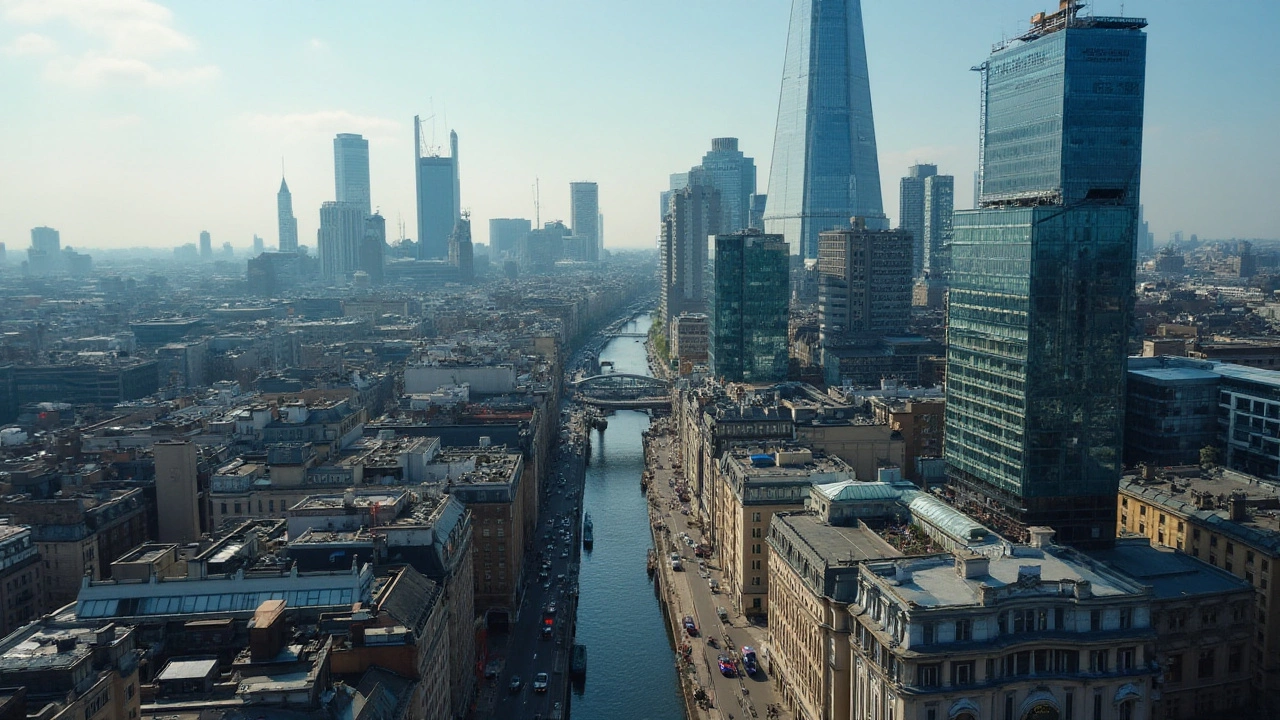
Tips for Successful Commercial Construction Projects
Embarking on a commercial construction project requires meticulous planning and strategic execution. The success of such ventures often lies in the details, from selecting the initial site to the final touches of interior design. One of the critical steps is assembling a competent team. This involves not only skilled architects and engineers but also experienced contractors who understand the nuances of commercial requirements. The synergy between these professionals can drastically influence the project's timeline and final outcome.
Communication stands paramount in the construction industry. Establishing clear lines of dialogue between all stakeholders, including project managers, investors, and on-site workers, helps in seamlessly navigating unforeseen challenges. Regular meetings and updates ensure that everyone is on the same page and any hiccups can be addressed promptly. Without clear communication, even minor misunderstandings can spiral into costly errors.
A strong emphasis on sustainability cannot be overlooked in today’s landscape. With increasing awareness of environmental impacts, integrating eco-friendly practices into the construction process isn't just trendy—it's essential. This could range from using recycled materials to opting for energy-efficient systems. Not only does this approach often result in long-term savings, but it also aligns with current global standards and legislation.
"Buildings must not only serve their intended functions but also support the wellbeing of those who inhabit them," notes renowned architect Zaha Hadid.One cannot stress enough the importance of budgeting at every phase of a commercial construction project. Preparing for costs that exceed initial estimates helps safeguard against financial hurdles mid-project. It’s wise to allocate funds for contingencies, which are an inevitable part of any build. Clearly defining project objectives and aligning them with financial resources can prevent overcommitting financially or cutting crucial corners.
Technological integration is transforming how projects are managed and executed. Tools such as Building Information Modeling (BIM) have become indispensable. They allow for detailed visualization of the project before ground is broken, minimizing risks and enabling better resource management. The data-driven insights offered by these tools can lead to more efficient use of materials and labor, further enhancing project outcomes.
Lastly, understanding and complying with local zoning laws and regulations accelerates the approval process and eliminates potential legal roadblocks. Engaging with local authorities early on is a sound strategy to ensure the project adheres to required standards. This diligence avoids costly redesigns or delays, making project progression smoother and deadlines more attainable.

